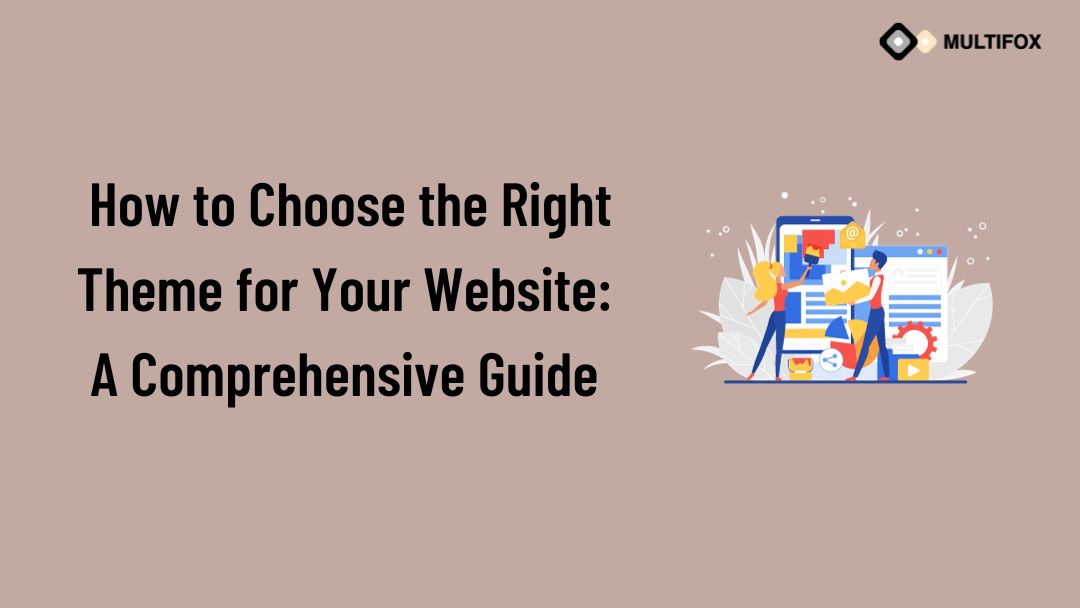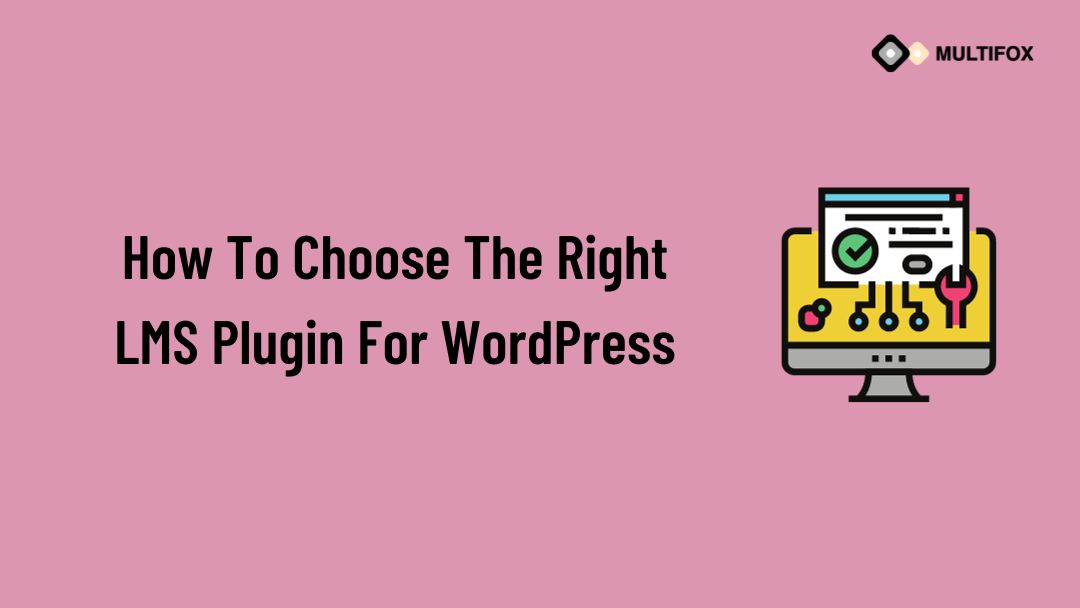If you’re planning on running or are currently running an educational website, then you should add an LMS or a learning management system plugin...
How To Choose The Right Theme For Your Website: A Comprehensive Guide
The Right Theme For Your Website theme is more than just its face; it’s the backbone of the user experience. The right theme can make your website intuitive, attractive, and, most importantly, user-friendly.
In this comprehensive guide, you’ll discover why the theme matters, what features to consider, and how to decide to suit your needs best.
So, buckle up as we delve into the critical factors to consider when choosing the best theme for your website.
Table of Contents
1. Why Theme Matters?
Have you ever visited a website and felt lost or overwhelmed?
Chances are, the theme could have been more user-friendly. A well-chosen theme looks good, drives user engagement, and increases conversions. The digital ambiance welcomes your visitors and gently guides them to take action—reading a blog post, signing up for a newsletter, or making a purchase.
For instance, a children’s toy store website would have bright colors, playful fonts, and easy navigation. Contrast this with a law firm’s site, which would generally be better off with a more sober, professional look.
2. Define Your Website’s Purpose.
Before you even start looking at themes, knowing what your website aims to do is essential. Is it an online store, a portfolio, or a news blog?
Each type has different requirements. For example, an online store would benefit from a theme that supports e-commerce features, whereas a portfolio would need a theme that showcases images or artwork well.
The website for a local diner might require a simple theme that allows for an easily accessible menu and a reservation option. Be clear about what you need before diving into the sea of possibilities.
3. Essential Features for selecting the Right Theme For Your Website.
Now that you’ve figured out what your website is for jot down the features you can’t do without. Responsiveness is necessary; your website should look good and function well on all devices. Page loading speed is another non-negotiable factor.
According to Google, 53% of mobile users abandon a site if it takes more than three seconds to load. You might also want customization options to tweak the theme according to your brand colors, logos, and more. A good example is a photographer’s website, where a dark or black background would let the pictures stand out.
Another feature to consider is search engine optimization (SEO). Some themes are coded better for SEO than others. An SEO-friendly theme will do much of the heavy lifting, ensuring your content ranks higher in search engine results.
Look for themes that use schema markup, as it helps search engines understand the content on your pages. Let’s say you run a cooking blog; a theme with schema markup would make it easier for Google to identify your recipes, cooking times, and ingredients, thereby improving how your website performs in searches.
Additionally, accessibility features are becoming increasingly important. Your theme should be accessible to all users, including those with disabilities. Features like keyboard navigation, screen reader compatibility, and other ADA-compliant functionalities can make your site more inclusive and reach a broader audience.
4. Budget Constraints while selecting the right theme for your website.
The good news is that fantastic themes are available at every price point, even free. But remember, you get what you pay for. Free themes often come with limited features and little to no support. On the other hand, premium themes offer more customization options and are generally better supported.
Decide your budget ahead of time and try to stick to it. Imagine buying a car—you can use the functional sedan or splurge on a luxury SUV. Both will take you from points A to B, but the ride will differ vastly.
5. Reviews and Ratings.
Think of these reviews and ratings as your trustworthy scouts. They give you insights that you won’t find in the theme description. You’ll learn about the developers’ level of support, how often the theme is updated, and even how it performs under real-world conditions.
Take the time to read multiple reviews and look for recurring issues or praises. Ratings are the shorthand for quality; a high rating usually indicates a reliable theme. However, consider newer themes that have fewer reviews but show tremendous potential.
Remember, not all reviews are created equal. Look for in-depth reviews that discuss a theme’s pros and cons. Are there issues with speed, glitches, or customization? These are red flags you shouldn’t ignore.
Also, consider the date of the reviews. Technology changes quickly, so recent reviews are generally more reliable. Pay special attention to how the theme developers respond to negative reviews. Their response will give you a good sense of the level of customer support you can expect.
Finally, check out expert reviews if available; these often provide a more comprehensive analysis and can give you confidence in your final choice.
6. Mobile Optimization an essential factor for selecting the Right Theme For Your Website.
Mobile optimization is not a luxury; it’s a necessity. According to Statista, 56% of website traffic comes from mobile devices. You must pay attention to this chunk of your audience. Ensure the theme you choose is mobile-friendly, not just in appearance but also in functionality.
For example, an online bookstore should ensure the search and checkout processes are as seamless on mobile as on a desktop.
Furthermore, as the digital landscape evolves, users increasingly engage with content through various platforms, especially social media. A comprehensive analysis of social media user behaviors and statistics reveals that many online interactions stem from mobile-optimized social platforms.
This underlines the importance of ensuring your site’s integrated social media features or widgets are mobile-friendly.
Ignoring this aspect could mean missing out on a vast audience that primarily browses and interacts through their smartphones and tablets.
7. Ongoing Support and Updates which determines The Right Theme For Your Website.
Your website is a dynamic entity that needs to evolve and adapt. Themes get updated for better compatibility with the latest web standards and technologies. Choose a theme from developers who are active in providing updates and ongoing support.
A theme without updates is like a car without servicing—it may work fine for a while, but expect hiccups. Ensure you can access customer support or community forums for help and advice.
It’s also beneficial to consider the longevity and reputation of the theme developer. Established developers are more likely to update their themes and offer consistent support. For example, imagine you’re choosing a contractor for your home renovation.
Would you go with a contractor with a track record of finishing projects on time and offering post-completion support? Or would you risk it with someone new, with no updates or reviews?
The same logic applies to theme developers.
Having a reliable support system means you’ll have a resource for resolving any future issues, which can be invaluable for maintaining a hassle-free website experience.
Conclusion
Choosing a suitable theme for your website is crucial. It affects user engagement, conversions, and even the traffic you receive.
Define your website’s purpose clearly, know your required essential features, and consider your budget constraints.
Pay attention to the value of reviews, mobile optimization, and ongoing support. A well-picked theme can make your website a digital haven for your target audience. So make your choice wisely.
AlsoRead:


